Due to the rigidity and material of the frame it was very good at transferring sound and resonating. Initially, the motor brackets rigidly mounted all stepper motors to the frame. Any vibration or high pitch noise would directly enter the frame and seemed to amplify. I found some fantastic “Astrosyn” vulcanised rubber motor mounts online and, after reading some great reviews, bought a set.
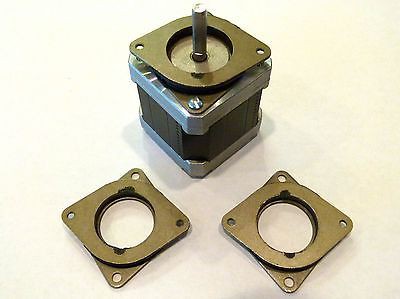
Astrosyn Dampners
Due to clearance issues, I had to print some new stepper motor brackets. This ensured that the back end of the stepper motor would not be touching the bottom plate of the frame. I noticed that there was a bit of flex in the rubber vibration dampners so designed a slight 2° angle into the flange part of the bracket.
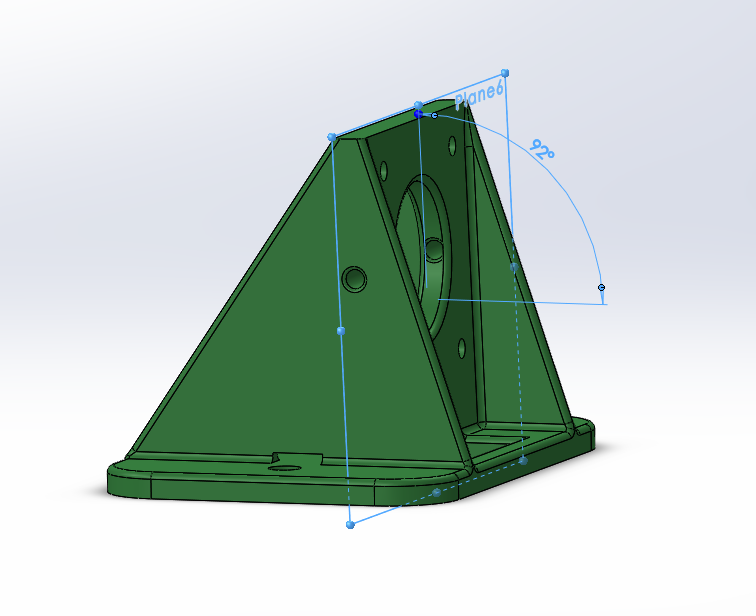
A slight angle
This allowed the motor shaft to remain horizontal and prevent the belt from bunching up at the far end of the pulley. I added a small hole in each side of the bracket to allow the pulley grub screw to be accessed easily. Without this hole, I would have to dismantle the whole thing to adjust the pulley position on the shaft. I also made the bracket use the same bolt from the linear rail clamp and it turned out quite neat.
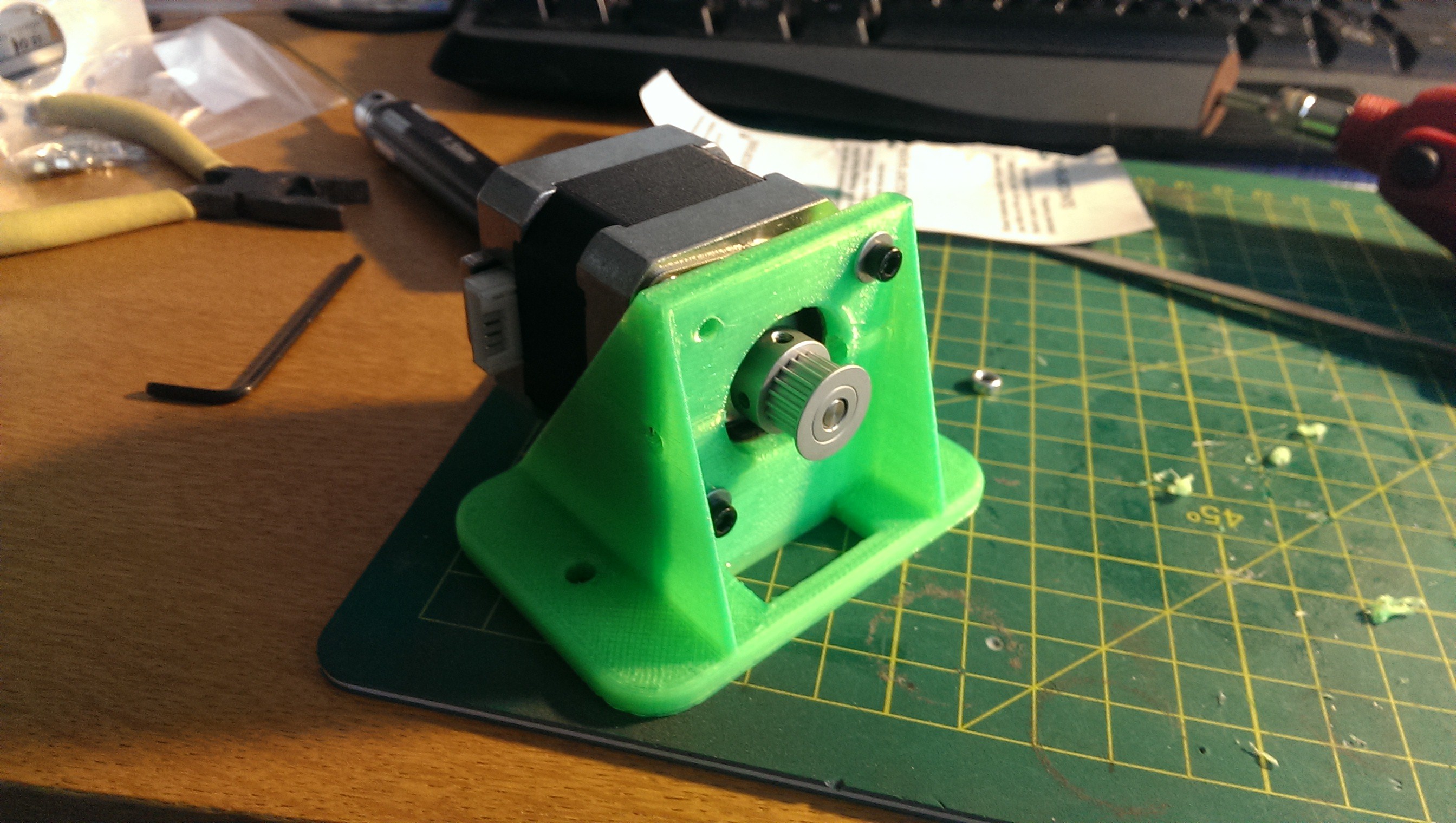
Fits well
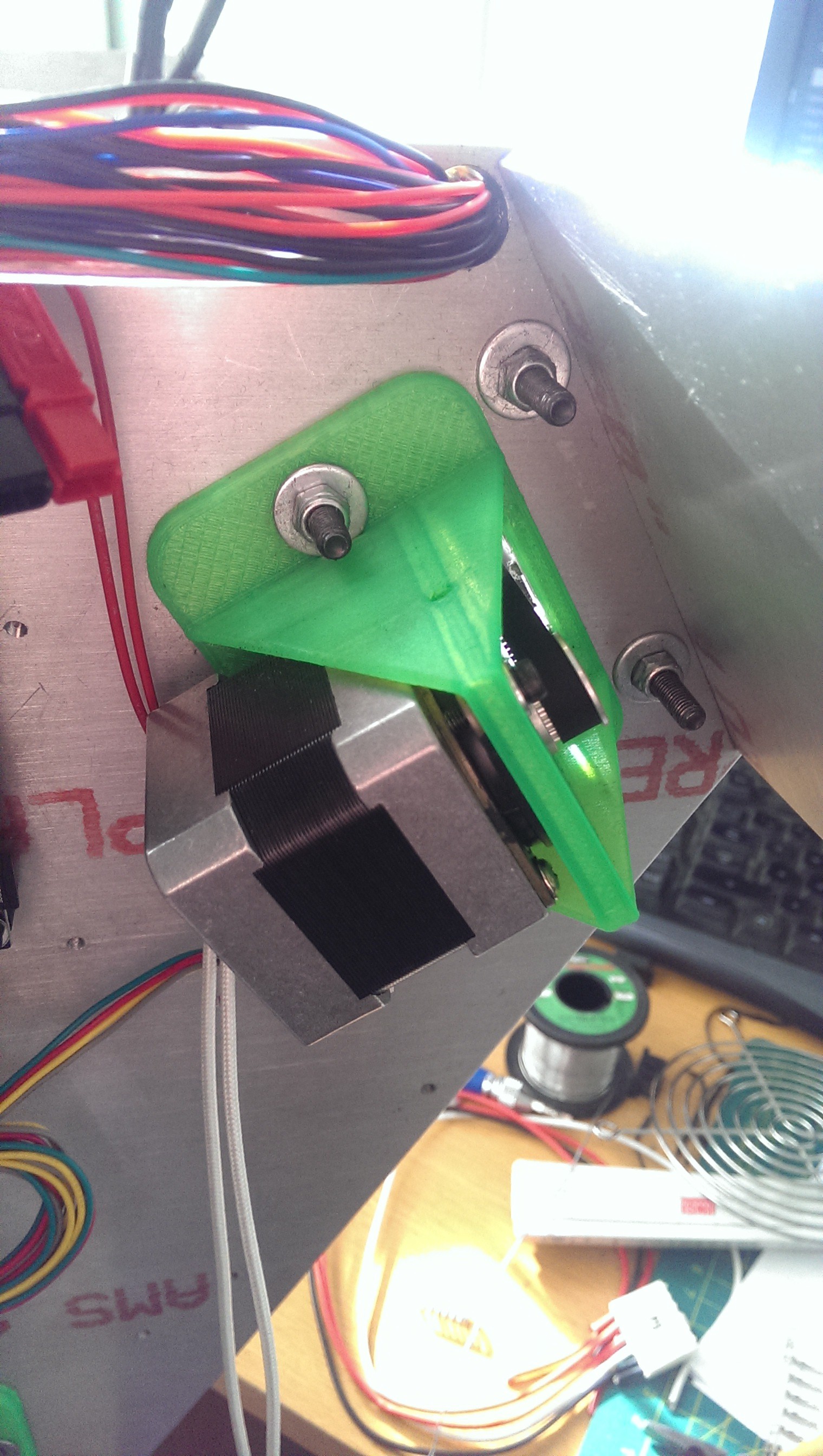
Neat!
The extruder was probably the noisiest due to the rapid changes in direction. I found some M3 rubber standoffs to use for isolating the extruder motor. These cut out most of the resonating noise.
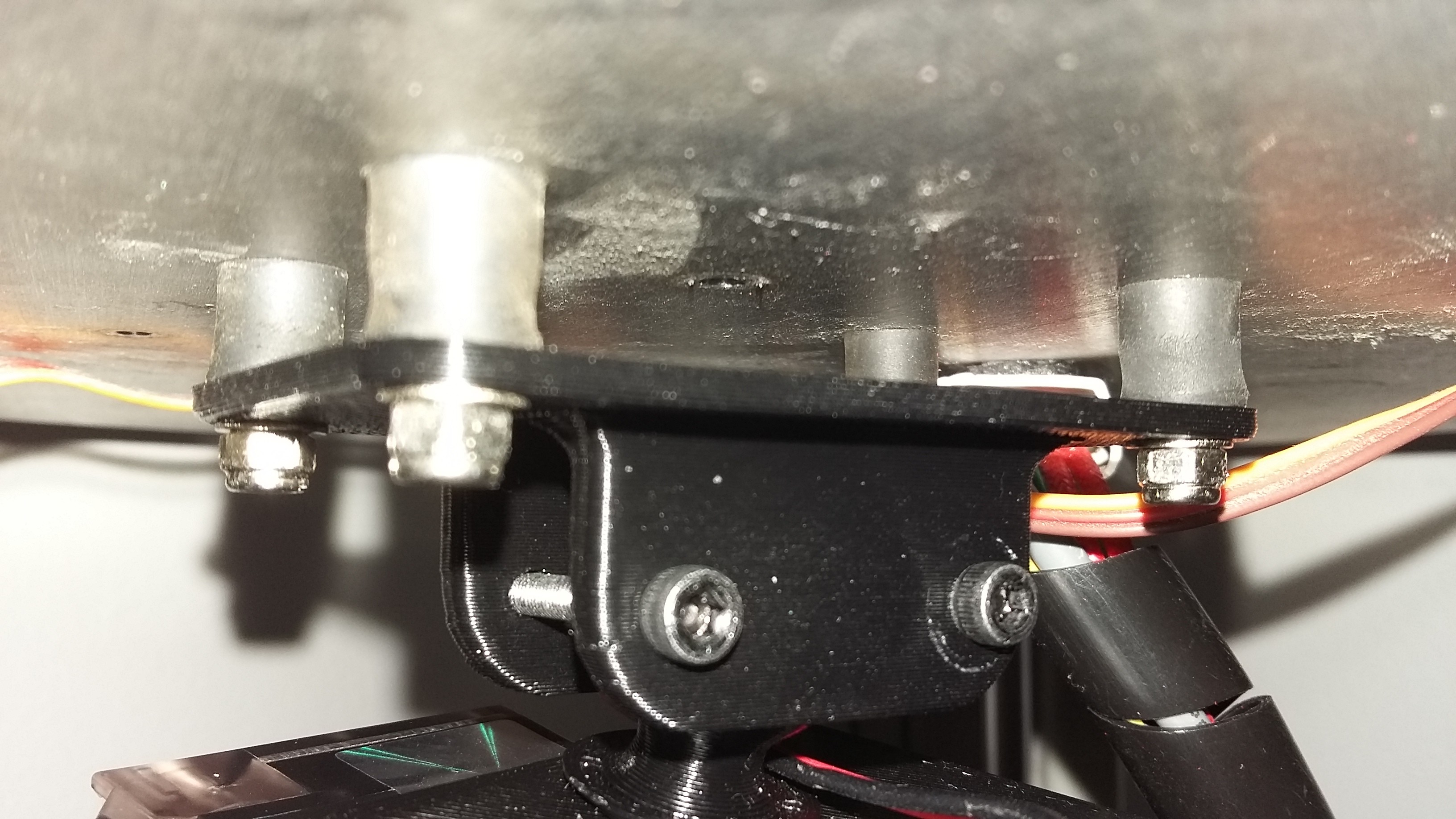
Extruder mount (future)
A common problem with using ball ends is that they have a tiny amount of play. This can adversely affect print quality, especially at higher speeds. Most people use rubber bands between the rod pairs to keep some tension on the balls. I adopted this method as well. My rubber bands started to perish so I bought some elastic and printed some tiny clips.
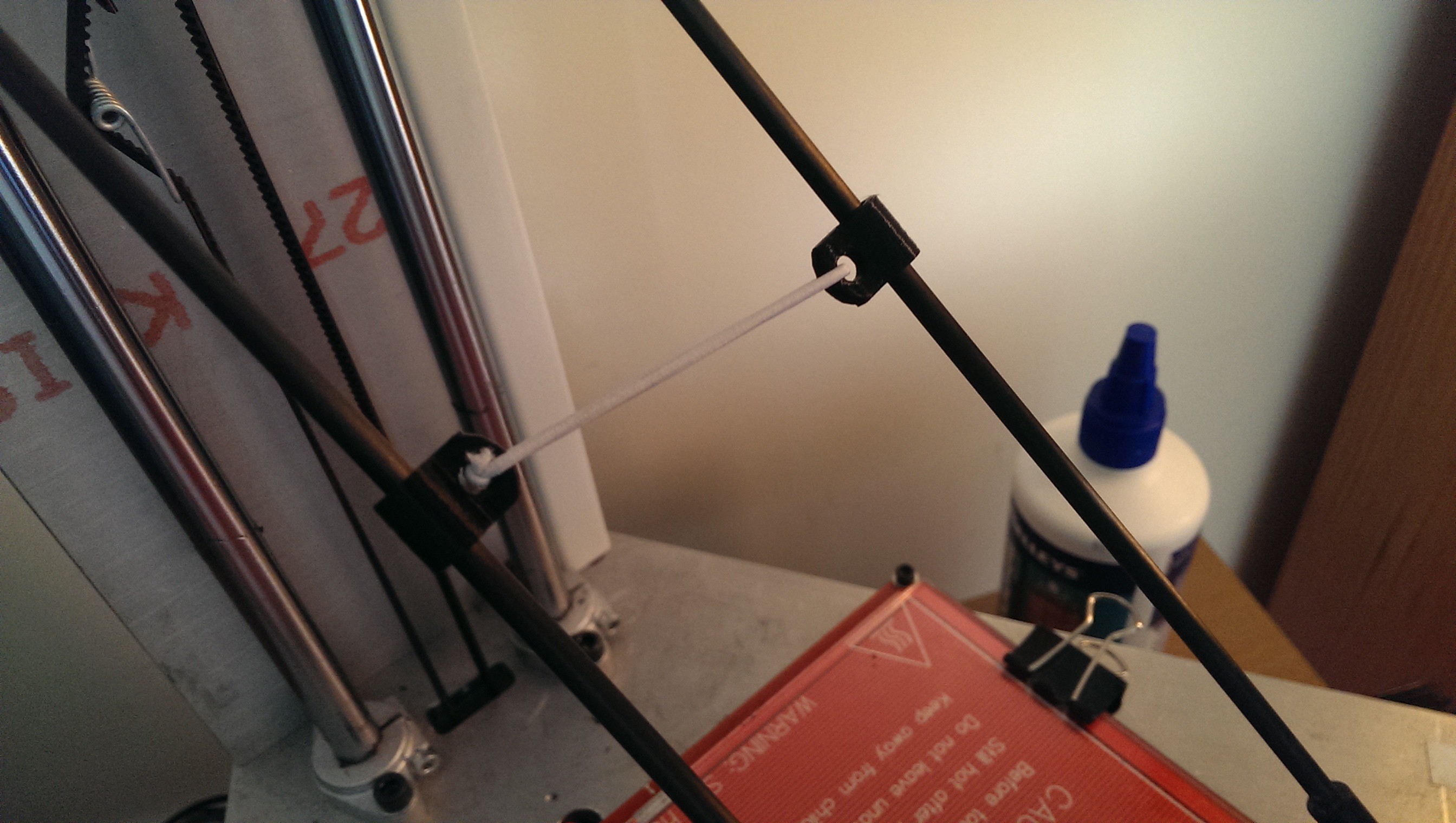
Arm tensioners
Discussions
Become a Hackaday.io Member
Create an account to leave a comment. Already have an account? Log In.